Items filtered by date: January 2024
Plantar Warts and HPV Strains
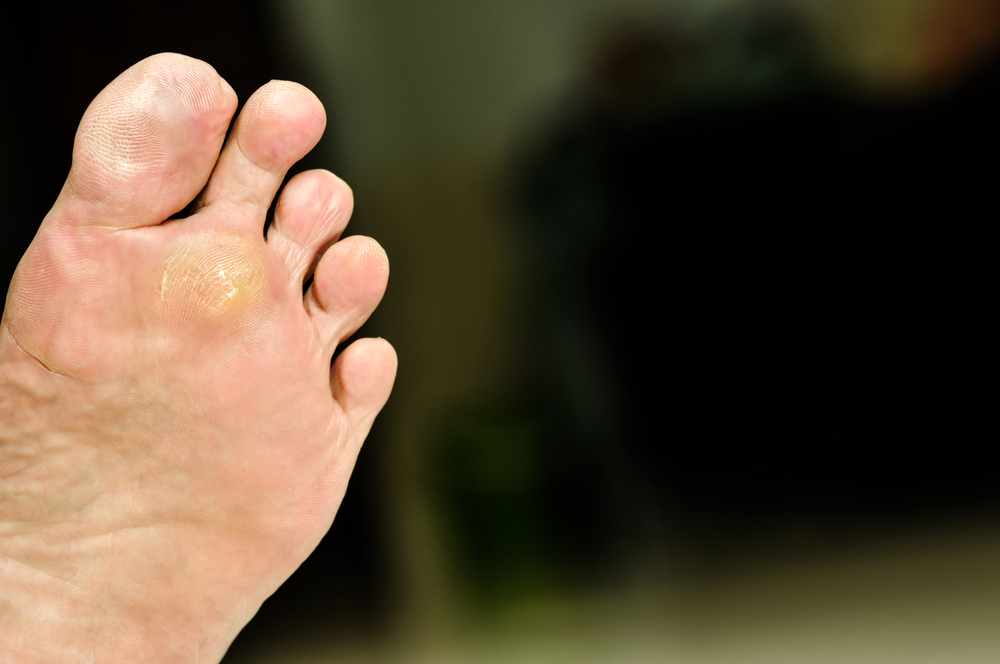
Plantar warts are a type of skin growth on the bottom of the foot caused by human papillomavirus, or HPV, infection. There are many types of HPV, and some of them are linked to skin warts. Plantar warts are a frequent type of skin wart. Because plantar warts can be uncomfortable, many people seek treatment from podiatrists. Plantar warts can be difficult to treat, and many treatments do not work. Different types of HPV are linked to different warts, and understanding which type causes the wart can help improve treatment and reduce side effects. If you or your child has developed a plantar wart, it is suggested that you schedule an appointment with a podiatrist who can guide you toward the treatment option that is right for you.
Plantar warts can be very uncomfortable. If you need your feet checked, contact Gary J. Kaiserman, DPM from Achilles Footcare Center. Our doctor will assist you with all of your foot and ankle needs.
About Plantar Warts
Plantar warts are the result of HPV, or human papillomavirus, getting into open wounds on the feet. They are mostly found on the heels or balls of the feet.
While plantar warts are generally harmless, those experiencing excessive pain or those suffering from diabetes or a compromised immune system require immediate medical care. Plantar warts are easily diagnosed, usually through scraping off a bit of rough skin or by getting a biopsy.
Symptoms
- Lesions on the bottom of your feet, usually rough and grainy
- Hard or thick callused spots
- Wart seeds, which are small clotted blood vessels that look like little black spots
- Pain, discomfort, or tenderness of your feet when walking or standing
Treatment
- Freezing
- Electric tool removal
- Laser Treatment
- Topical Creams (prescription only)
- Over-the-counter medications
To help prevent developing plantar warts, avoid walking barefoot over abrasive surfaces that can cause cuts or wounds for HPV to get into. Avoiding direct contact with other warts, as well as not picking or rubbing existing warts, can help prevent the further spread of plantar warts. However, if you think you have developed plantar warts, speak to your podiatrist. He or she can diagnose the warts on your feet and recommend the appropriate treatment options.
If you have any questions please feel free to contact our offices located in Forest Lane and West Kiest Boulevard Dallas, TX . We offer the newest diagnostic and treatment technologies for all your foot and ankle needs.
Common Causes of Ankle Pain
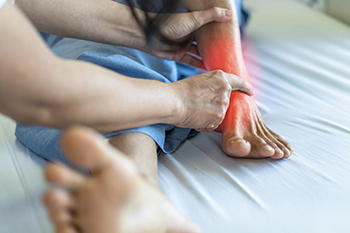
Ankle pain, a prevalent discomfort that can hinder mobility, stems from various underlying factors. One frequent culprit is sprained ligaments, often resulting from sudden twists or awkward movements that strain the ankle beyond its normal range. Tendonitis, inflammation of the tendons surrounding the ankle joint, also can cause persistent pain, especially with movement. Arthritis, a condition marked by joint inflammation, can affect the ankle, resulting in discomfort and stiffness. Fractures, often the result of impact or trauma, can cause sharp and localized pain. Additionally, overuse injuries, stemming from repetitive stress on the ankle, may lead to chronic discomfort. Certain conditions, such as gout or infections, can contribute to ankle pain. Understanding these diverse causes is pivotal for effective intervention and management. If you are experiencing ankle pain, it is strongly suggested that you consult a podiatrist who can determine what the cause is, and offer appropriate relief and treatment remedies.
Ankle pain can have many different causes and the pain may potentially be serious. If you have ankle pain, consult with Gary J. Kaiserman, DPM from Achilles Footcare Center. Our doctor will assess your condition and provide you with quality foot and ankle treatment.
Ankle pain is any condition that causes pain in the ankle. Due to the fact that the ankle consists of tendons, muscles, bones, and ligaments, ankle pain can come from a number of different conditions.
Causes
The most common causes of ankle pain include:
- Types of arthritis (rheumatoid, osteoarthritis, and gout)
- Ankle sprains
- Broken ankles
- Achilles tendinitis
- Achilles tendon rupture
- Stress fractures
- Tarsal tunnel syndrome
- Plantar fasciitis
Symptoms
Symptoms of ankle injury vary based upon the condition. Pain may include general pain and discomfort, swelling, aching, redness, bruising, burning or stabbing sensations, and/or loss of sensation.
Diagnosis
Due to the wide variety of potential causes of ankle pain, podiatrists will utilize a number of different methods to properly diagnose ankle pain. This can include asking for personal and family medical histories and of any recent injuries. Further diagnosis may include sensation tests, a physical examination, and potentially x-rays or other imaging tests.
Treatment
Just as the range of causes varies widely, so do treatments. Some more common treatments are rest, ice packs, keeping pressure off the foot, orthotics and braces, medication for inflammation and pain, and surgery.
If you have any questions, please feel free to contact our offices located in Forest Lane and West Kiest Boulevard Dallas, TX . We offer the newest diagnostic and treatment technologies for all your foot care needs.
Do Your Child's Feet Hurt?
Common Foot Injuries in Sports
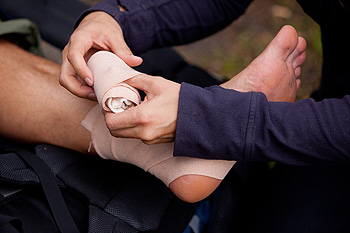
Common foot injuries in sports often result from the intense physical demands placed on the lower extremities. One prevalent injury is the ankle sprain, which occurs when ligaments surrounding the ankle are stretched or torn due to sudden movements or impacts. Athletes are also prone to stress fractures, particularly in the metatarsal bones, resulting from repetitive impact forces. Plantar fasciitis, another frequent ailment, involves inflammation of the tissue along the sole of the foot, causing heel pain. Achilles tendonitis, often seen in runners, is the inflammation of the Achilles tendon, causing discomfort and reduced mobility. Turf toe, common in sports played on artificial turf, is a sprain of the big toe joint. Athlete's foot is a fungal infection affecting many athletes due to shared locker rooms. Proper footwear, conditioning, and technique are essential in preventing these injuries. If you have a foot injury that you have sustained playing sports, timely diagnosis and appropriate treatment are vital, and It is suggested that you schedule an appointment with a podiatrist today.
Ankle and foot injuries are common among athletes and in many sports. They can be caused by several problems and may be potentially serious. If you are feeling pain or think you were injured in a sporting event or when exercising, consult with Gary J. Kaiserman, DPM from Achilles Footcare Center. Our doctor will assess your condition and provide you with quality foot and ankle treatment.
Common Injuries
The most common injuries that occur in sporting activities include:
- Achilles Tendonitis
- Achilles Tendon Rupture
- Ankle Sprains
- Broken Foot
- Plantar Fasciitis
- Stress Fractures
- Turf Toe
Symptoms
Symptoms vary depending upon the injury and in some cases, there may be no symptoms at all. However, in most cases, some form of symptom is experienced. Pain, aching, burning, bruising, tenderness, tightness or stiffness, sensation loss, difficulty moving, and swelling are the most common symptoms.
Treatment
Just as symptoms vary depending upon the injury, so do treatment options. A common treatment method is known as the RICE method. This method involves rest, applying ice, compression and elevating the afflicted foot or ankle. If the injury appears to be more serious, surgery might be required, such as arthroscopic or reconstructive surgery. Lastly, rehabilitation or therapy might be needed to gain full functionality in the afflicted area. Any discomfort experienced by an athlete must be evaluated by a licensed, reputable medical professional.
If you have any questions, please feel free to contact our offices located in Forest Lane and West Kiest Boulevard Dallas, TX . We offer the newest diagnostic and treatment technologies for all your foot care needs.
Recurrent Ankle Sprains
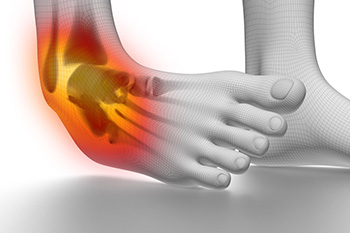
Recurrent ankle sprains pose a persistent challenge, impacting both daily activities and long-term joint health. When the ligaments surrounding the ankle undergo repeated stress or fail to heal properly after an initial sprain, individuals become susceptible to recurrent injuries. The telltale signs include swelling, pain, and instability, often accompanied by a popping or tearing sensation. Factors contributing to this cycle of sprains range from inadequate rehabilitation after the initial injury to anatomical predispositions and muscle imbalances. Individuals experiencing recurrent ankle sprains may find their range of motion compromised, affecting mobility and overall foot function. If you have sprained your ankle for the first time, or are experiencing recurrent ankle sprains. It is suggested that you are under the care of a podiatrist.
Although ankle sprains are common, they aren’t always minor injuries. If you need your ankle injury looked at, contact Gary J. Kaiserman, DPM from Achilles Footcare Center. Our doctor can provide the care you need to keep you pain-free and on your feet.
How Does an Ankle Sprain Occur?
Ankle sprains are the result of a tear in the ligaments within the ankle. These injuries may happen when you make a rapid shifting movement while your foot is planted. A less common way to sprain your ankle is when your ankle rolls inward while your foot turns outward.
What Are the Symptoms?
- Pain at the sight of the tear
- Bruising/Swelling
- Ankle area is tender to touch
- In severe cases, may hear/feel something tear
- Skin discoloration
Preventing a Sprain
- Wearing appropriate shoes for the occasion
- Stretching before exercises and sports
- Knowing your limits
Treatment of a Sprain
In many cases, the RICE method (Rest, Ice, Compression, and Elevate) is used to treat ankle sprains. However, you should see a podiatrist to see which treatment option would work best with your injury. In severe cases, surgery may be required.
It is important to ask your doctor about rehab options after you receive treatment for your injury. Stretching, strength training, and balance exercises may help the ankle heal while also preventing further injury.
If you have any questions, please feel free to contact our offices located in Forest Lane and West Kiest Boulevard Dallas, TX . We offer the newest diagnostic and treatment technologies for all your foot care needs.
Effective Strategies for Preventing Running Injuries
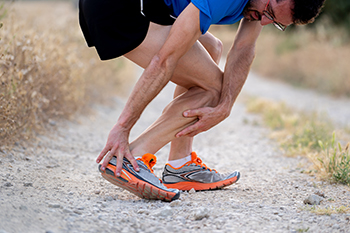
Running, a dynamic and invigorating exercise, offers a multitude of physical benefits. However, the repetitive impact of this activity can also lead to potential injuries if not approached with caution. Prevention of running injuries becomes paramount, and a holistic strategy is key to ensuring runners can continue to enjoy their passion without setbacks. Consistent warm-up routines, including dynamic stretches, prepare muscles and joints for the demands of running, reducing the risk of strains. Wearing appropriate footwear that provides ample support and cushioning is essential in maintaining optimal biomechanics during each stride. Gradual progression in training intensity and distance allows the body to adapt, minimizing the risk of overuse injuries. Incorporating cross training activities and strength exercises helps balance muscle development and enhances overall endurance. Active recovery, including stretching and cool-down exercises, is equally vital in preventing stiffness and promoting flexibility. If you have sustained an injury from running, it is suggested that you schedule an appointment with a podiatrist.
Exercising your feet regularly with the proper foot wear is a great way to prevent injuries. If you have any concerns about your feet, contact Gary J. Kaiserman, DPM of Achilles Footcare Center. Our doctor will treat your foot and ankle needs.
How to Prevent Running Injuries
Many common running injuries are caused by overuse and overtraining. When the back of the kneecap starts wearing out and starts causing pain in your knee, this is commonly referred to as runner’s knee. Runner’s knee is a decrease in strength in your quadriceps and can occur if you’re not wearing properly fitted or supporting shoes. To prevent runner’s knee, focusing on hip strengthening is a good idea, as well as strengthening your quads to keep the kneecaps aligned.
What Are Some Causes of Running Injuries?
- One cause of a common running injury is called iliotibial band syndrome.
- Plantar fasciitis is also another common injury.
- Stress fractures can occur from overtraining, lack of calcium, or even your running style.
Best Ways to Prevent Running Injuries
- Wear footwear that fits properly and suits your running needs.
- Running shoes are the only protective gear that runners have to safeguard them from injury.
- Make a training schedule. Adding strengthening exercises as well as regular stretching can help keep you strong and limber and can lessen the possibility of injuries.
- Stretching keeps muscles limber; this will help you gain better flexibility.
If you have any questions please feel free to contact our offices located in Forest Lane and West Kiest Boulevard Dallas, TX . We offer the newest diagnostic and treatment technologies for all your foot and ankle needs.

